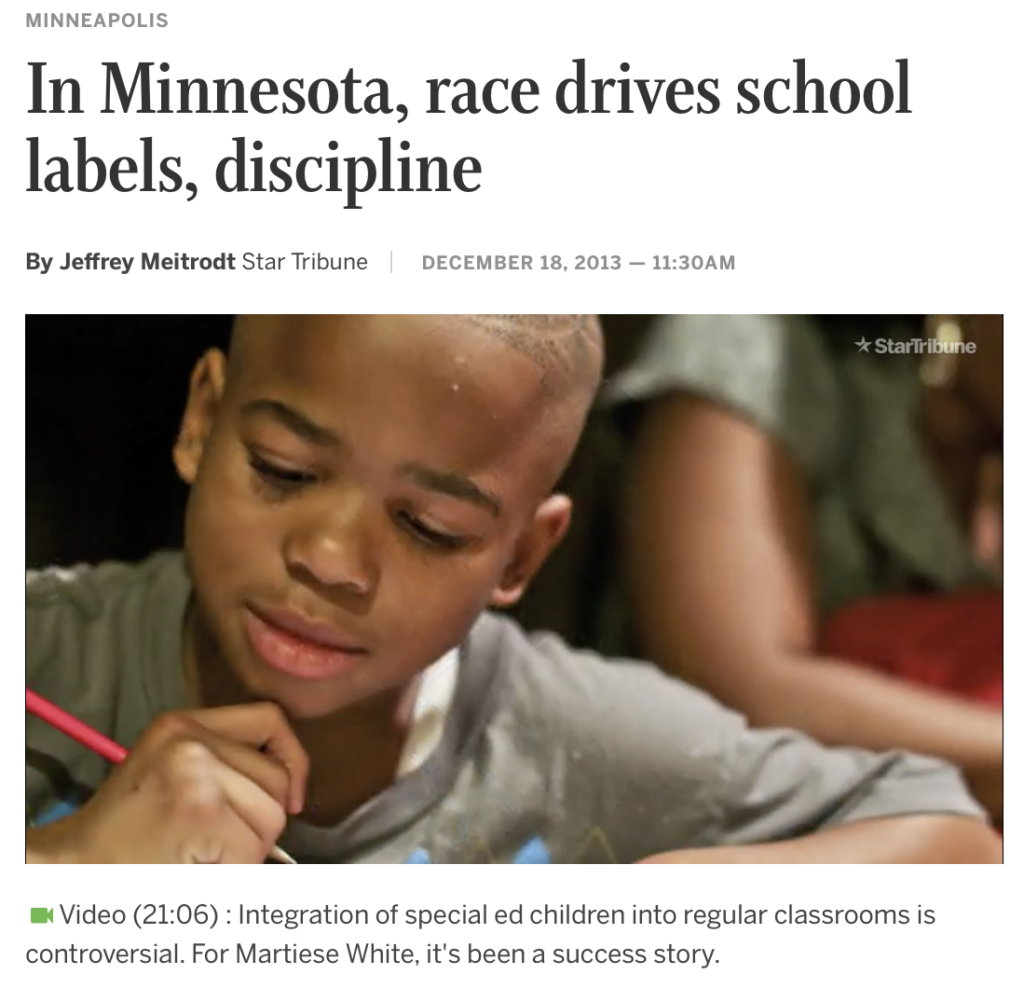The little yellow buses line up every morning outside Harrison Education Center in north Minneapolis, discharging dozens of teenagers to a high school no parents choose for their child.
Classrooms are kept locked at all times. Fights and suspensions are common. No one has graduated in a couple of years.
The school is where Minneapolis sends special education students with the worst behavior problems, kids who typically failed everywhere else they went. Administrators say the high school is supposed to be a temporary stop for students to learn self-control before going back to a less restrictive setting.
But few ever leave. And nearly 90 percent of the students are black.
Discrimination in the way students are labeled and disciplined has plagued special education across the country for decades, but a Star Tribune review of state and federal enrollment records shows that the problem is especially acute in Minnesota.
More than 4 percent of all black students in Minnesota are identified as having emotional or behavioral disorders, a subjective, catchall label for thousands of children considered disruptive. That rate is more than three times the national average for black students and higher than any other state in the country, according to the most recent federal data available.

